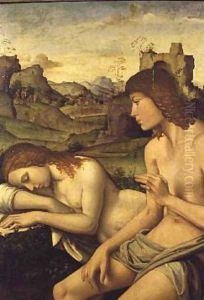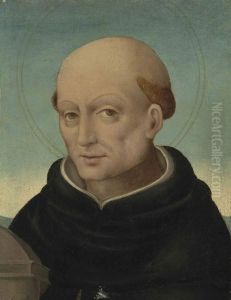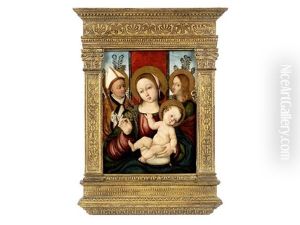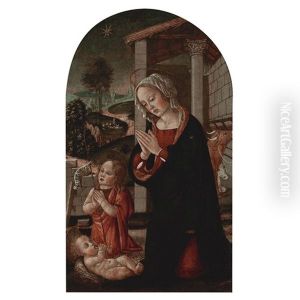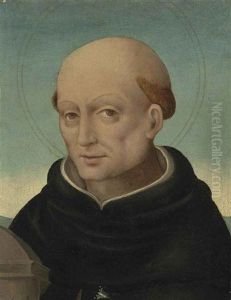Giovanni Battista Bertucci Paintings
Giovanni Battista Bertucci, also known as Giovanni Battista Bertucci il Giovane to distinguish him from his father, Giovanni Battista Bertucci the Elder, was an Italian painter of the Renaissance period. Born around 1516 in Faenza, a city in the region of Emilia-Romagna, he was part of a family of artists that made a significant contribution to the art of their region.
Bertucci received his initial training from his father, who was a prominent painter in Faenza. He later may have traveled to Rome to study the works of Raphael and other High Renaissance masters, as the influence of Roman art is evident in his work. However, the specific details of his education and early career remain somewhat obscure.
His work is characterized by its use of color and the graceful depiction of figures, blending elements of the Roman style with the more provincial tendencies of his home region. Bertucci's paintings often include religious subjects, as was common at the time, and he was known for his altarpieces and frescoes in local churches. His style reflects the transition from the High Renaissance to the Mannerist period, with a certain elegance and elongation of form typical of the latter movement.
Bertucci's contributions to the art world were largely overshadowed by the more famous artists of his era, such as Michelangelo and Titian, and for a long time, his works were not as well-known outside of his local region. However, art historians have come to appreciate his skill and the role he played in the diffusion of Renaissance styles across Italy.
There is not a lot of information available about his personal life or his career's later stages. Giovanni Battista Bertucci died around 1576. His legacy lives on through his artworks that can be found in various Italian churches and collections that showcase the richness of Renaissance art beyond the most celebrated centers like Florence and Rome.
